Most native species are often host to a plethora of insects and will experience some degree of defoliation (loss of leaves) throughout their lifetime, however; this is completely normal! That said, stress can occur as a result, so it’s important to be aware of the signs and symptoms caused by these pests and how you can take care of your trees and shrubs.
We’ve identified five of the most common pests we see in the field and how best to deal with them:
1. Honey locust plant bug
Honey locust plant bugs look similar to aphids and are tiny and pale green in colour. They tend to feed on the new leaf growth of honey locust trees in late spring, so damage most is prevalent in late May or early June. Leaves impacted will exhibit yellow or brown spotting and can become twisted or curled. Twig dieback may also occur after a heavy infestation.
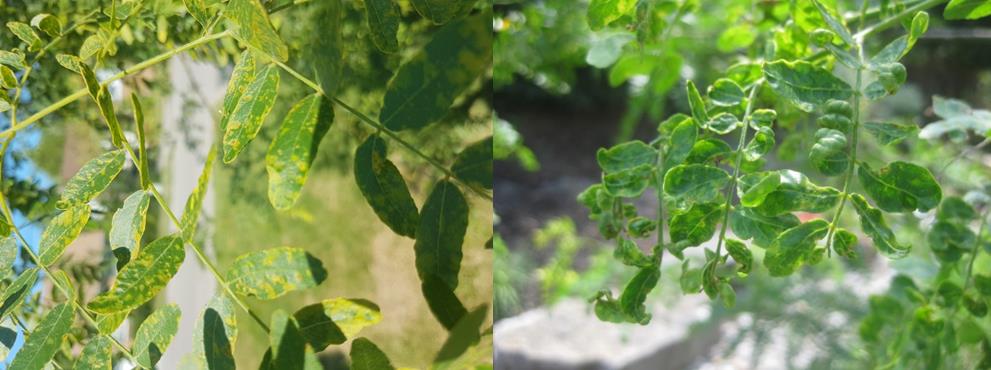
Lucky for us, damage caused by the honey locust plant bug is more of an aesthetic concern rather than a major health issue; however, it can cause stress, so regular watering is key to maintaining vigor in your tree Lucky for us, damage caused by the honey locust plant bug is more of an aesthetic concern rather than a major health issue; however, it can cause stress, so regular watering is key to maintaining vigor in your tree.
2. Japanese beetle
Japanese beetles are small, invasive species that are metallic copper/green in colour. These beetles will munch on the green parts of a leaf of no specific species, leaving behind a skeletal appearance. Most of the time, the loss of leaf area is not high enough to cause any permanent damage. However, if the infestation becomes severe, the tree could suffer if leaf loss is significant and its ability to photosynthesize (a tree’s food making process) declines.
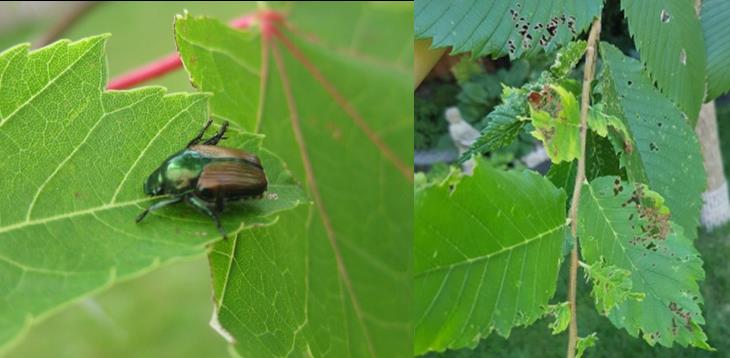
If the beetles are visible on your tree, spray the leaves with a hose early in the morning, catching the fallen insects on a tarp below and dump them into a bucket of soapy water to kill them off. Repeat daily until the problem has been resolved.
3. Viburnum leaf beetle
The viburnum leaf beetle chews on the leaves and twigs of viburnum species, such as highbush cranberry, arrowwood, nannyberry, and northern wild raisin. Beetle eggs will hatch along twigs in the spring and the larvae will chew on the leaves. In early summer, the larvae enter the soil around the shrub and in mid-summer, will emerge as adult beetles and return to the shrub to lay their eggs and continue to chew the leaves. Luckily, viburnums have the ability to produce a second round of leaves in the summer, provided they have a good energy reserve. If defoliation persists, however, health may decline.
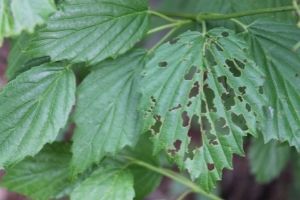
To help your viburnum, spray the tops and undersides of the leaves with a mixture of tap water and a few drops of dish soap. If the larvae are visible, you can remove them by hand and dump them in a bucket of soapy water to kill them off. In the fall, prune back infested twigs to avoid larvae re-emerging in the spring.
4. Leafcutter bees
Insect damage in distinct, circular shapes along the edges of leaves means that your tree has been visited by leafcutter bees. These are friendly native summer pollinators that use the leaf cuttings to build their nests.
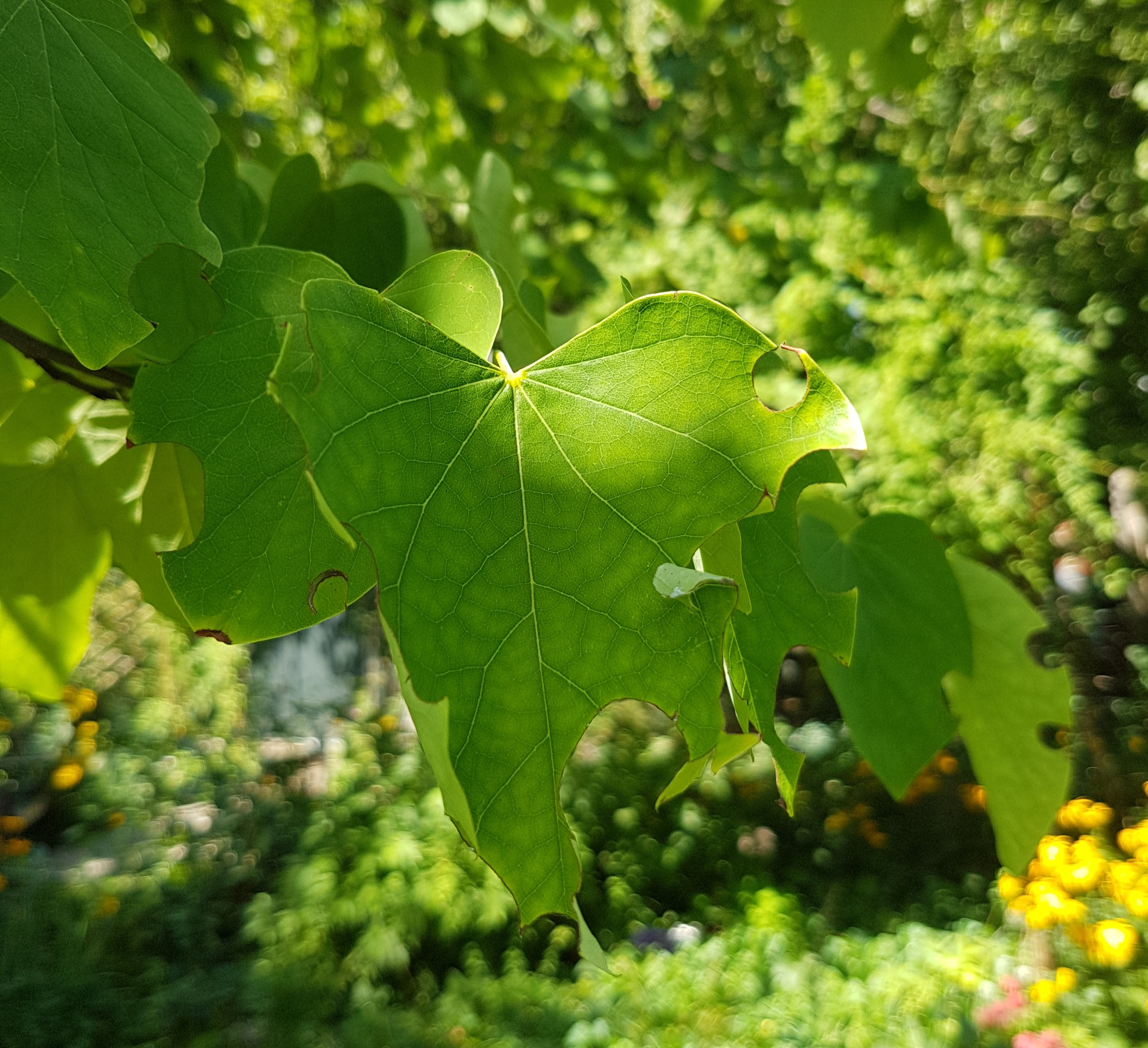
The good news is leafcutter bees typically don’t chew on leaves enough to cause any permanent damage, so the result is purely an aesthetic concern. These native bees are important pollinators and so you should avoid using any eradication tactics like spraying.
5. Galls
Galls, which are often described as small bumps on leaves, are really just swollen plant tissue containing insects that feed on nutrients from the leaves. They can appear on any tree but are most commonly seen on hackberry, basswood and most maple trees. The majority of galls are merely cosmetic in nature and will not cause significant damage. The number of galls, however, can fluctuate from year to year and they will often phase out as the tree matures.
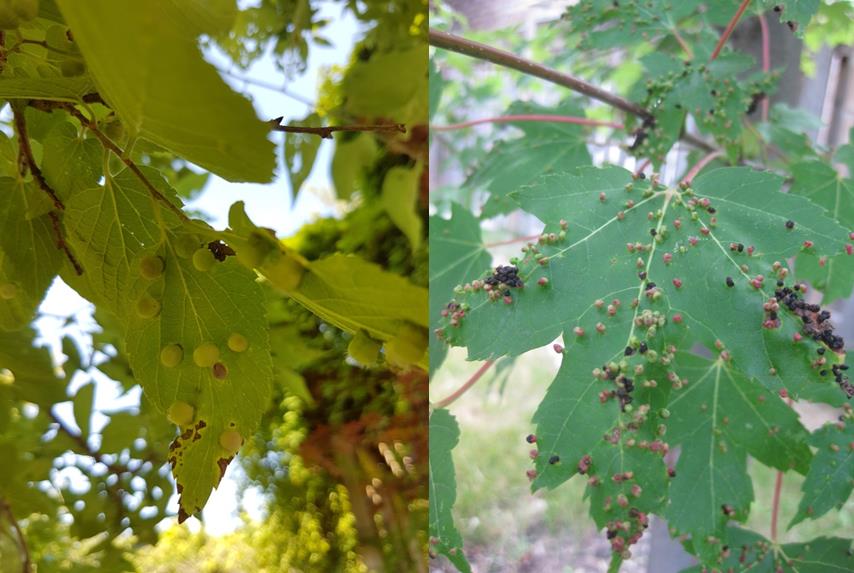
Galls are often controlled by natural predators throughout the growing season in the spring, but you can help reduce recurrence by collecting gall covered leaves in the fall and disposing of them in the garbage.
If your tree or shrub is experiencing signs or symptoms from any of the above pests, regular care and maintenance is especially important in order to reduce stress. For young trees, be sure to water twice per week using approximately 6 gallons of water each time. That is the equivalent of using 3 full watering cans twice per week or using a hose with no nozzle on a very slow trickle for approximately 15 minutes twice per week. For more mature trees,3 or more years after planting, provide a deeper less frequent watering (weekly, bi-weekly or as needed depending on the tree and location) from spring through fall. If at any time you are unsure whether your tree or shrub is getting too much or too little water, stick your finger deep into the soil underneath the mulch before watering and only water when the soil is dry!
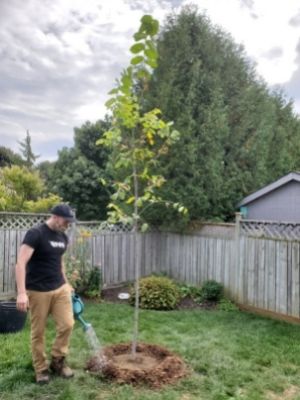
In addition to regular water, add a healthy layer of organic compost underneath a layer of natural wood-chip mulch (approximately two to four inches deep) in a doughnut-shape around the trunk. Do not allow the compost or mulch to touch the trunk as this can promote rot. The compost and mulch will give your tree or shrub nutrients over time to reduce stress and encourage healthy growth.
Unsure what your tree is experiencing? You can find additional information on common pests that may affect the health of your tree or shrub on our website.
Adriana Rezai-Stevens is the Residential Planting Programs Field Coordinator at LEAF.
LEAF offers a subsidized Backyard Tree Planting Program for private property. The program is supported by the City of Toronto, the Regional Municipality of York, the City of Markham, the Town of Newmarket, the Regional Municipality of Durham, the Town of Ajax, the City of Oshawa, the City of Pickering, the Township of Scugog, the Town of Whitby, Ontario Power Generation, Ontario Trillium Foundation and GrandTrees/Canadian Trees For Life.
